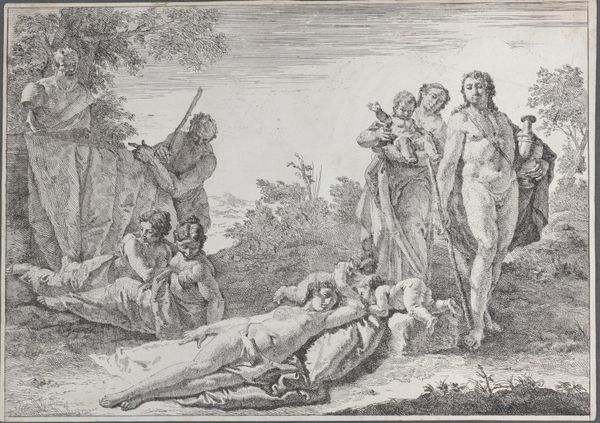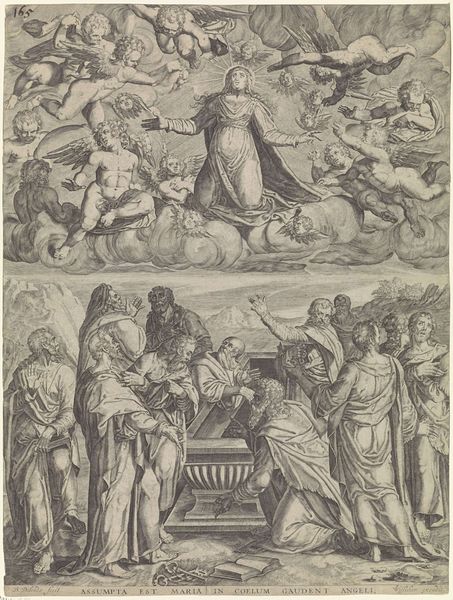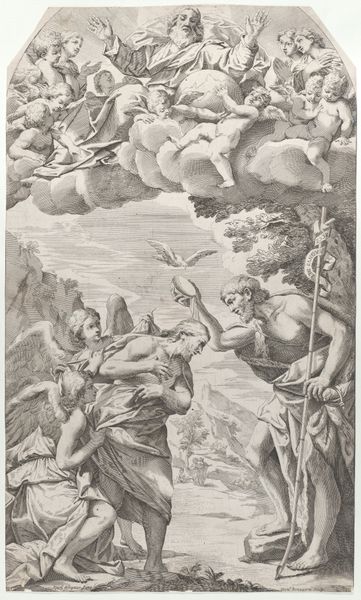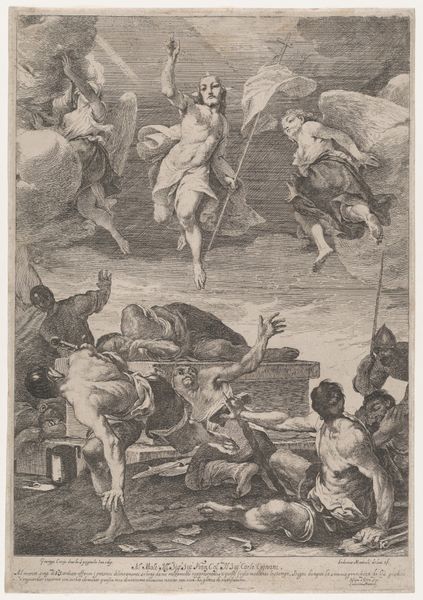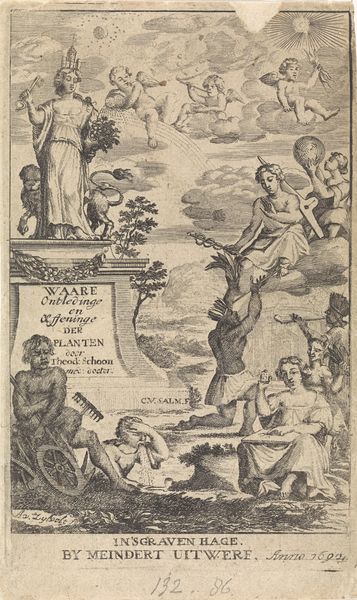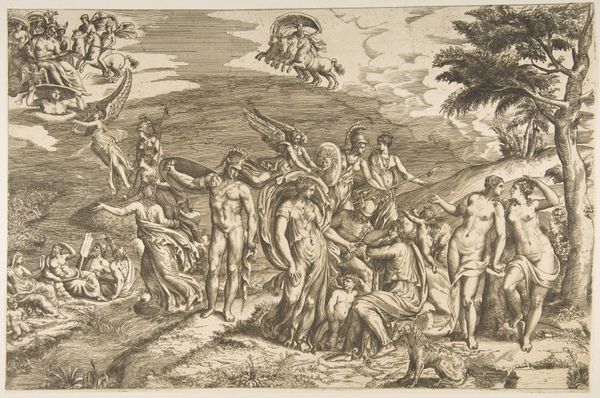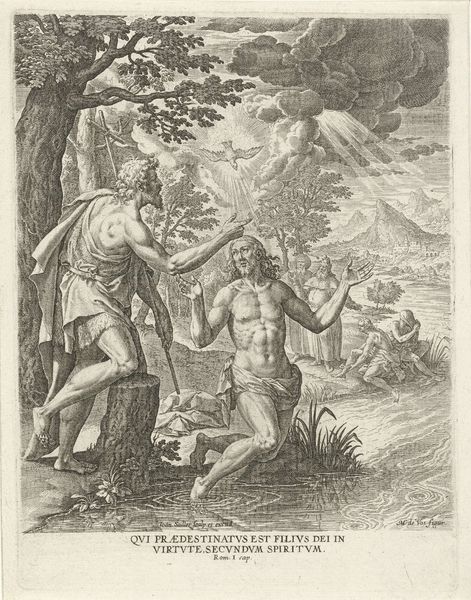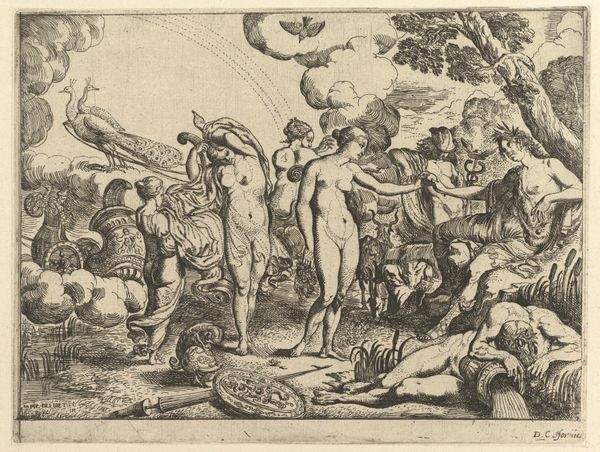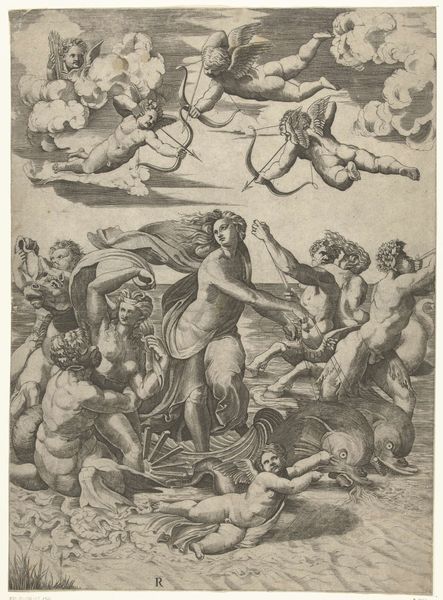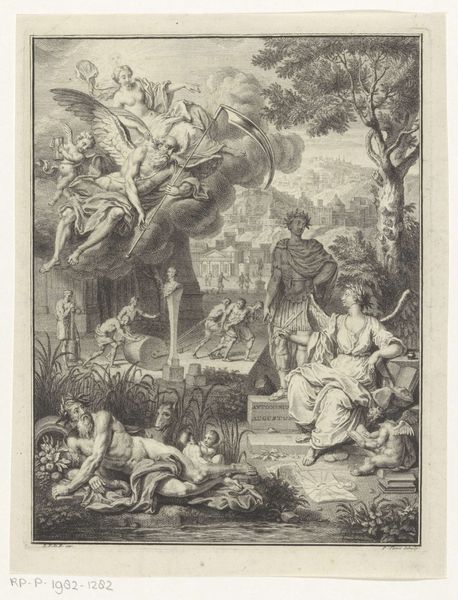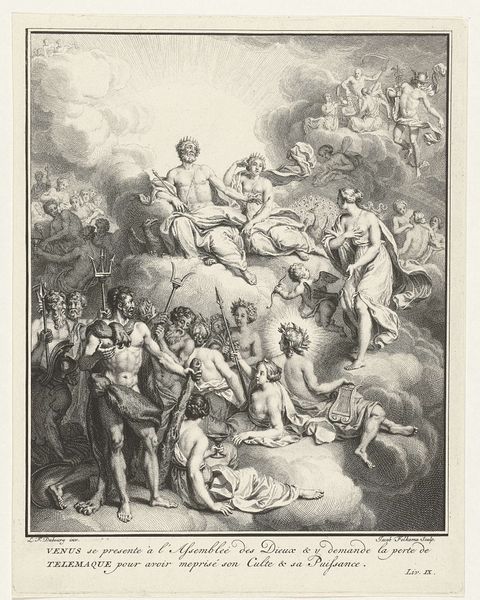
Dimensions: 166 mm (height) x 110 mm (width) (plademaal)
Editor: This is J.F. Clemens' "Venus Among the Assembled Gods," created between 1770 and 1772. It’s an engraving on paper, so the line work is quite delicate. The figures have a sense of drama, almost operatic, but there's something a bit unsettling about the stark contrast between light and shadow. What social dynamics do you see represented here? Curator: What immediately strikes me is the construction of Venus within the male gaze and the colonial context inherent in the representation of classical mythology. Here, we see Venus positioned almost as a spectacle for the assembled gods, who themselves embody patriarchal power structures. Consider how Clemens, working during the Enlightenment, uses allegory not merely for aesthetic pleasure, but to reflect the era’s complex negotiation with power, morality, and desire. Who is in the center, and why do you think they are situated as such? Editor: Well, Venus is the focal point, surrounded by the gods. It feels like she is a representation of feminine beauty being judged. Does the poem written at the bottom provide clues? Curator: Absolutely! It brings forward the potential controversies related to it, especially as a critique of a powerful, beautiful woman emerging in public life. What the poem, alongside the central composition, invites us to contemplate is the male response when a woman occupies spaces traditionally held by them. Think about how visual and textual languages combine to negotiate ideas of feminine autonomy and the policing of female bodies in society. Do you feel this reflects broader trends in the 18th century? Editor: Definitely, I see how the anxieties surrounding female visibility in the public sphere might be projected onto these classical figures. The poem makes me think it has subversive, progressive intentions. Curator: Exactly! Examining Clemens' engraving allows us to engage in critical dialogue about representation, power, and the historical construction of gender and identity. It prompts us to examine whose stories are told, how they are told, and who benefits from those narratives. Editor: I will consider this in the larger context of gender theory. Thank you.
Comments
No comments
Be the first to comment and join the conversation on the ultimate creative platform.


